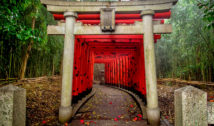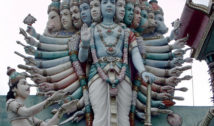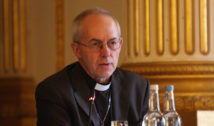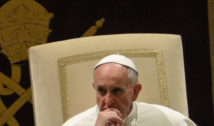
How Mahayana Buddhists Celebrate New Year
- By Derek Welch --
- 25 Jan 2016 --

New Year traditions of the largest sub-sect of Buddhism, Mahayana.
Mahayana Buddhism is the largest branch or sub-division of the Buddhist religion. Compared to the faith’s other forms like the Theravada, Mahayana Buddhists believe that enlightenment can be achieved during an individual’s single or current lifetime. Additionally, not only monks and nuns have the opportunity to achieve it but also of ordinary Buddhists. The goal for everyone is to become bodhisattvas through service and helping others to achieve nirvana as well.
How Mahayana Buddhists Celebrate New Year[/tweetthis]
Mahayana Buddhism is the dominant faith of Northern and Eastern parts of Asia including China, Korea, Japan, Mongolia and Tibet. Among the key traditions include Zen, Tiantai, Korean Seon, Chinese Chan, Pure Land and Nichiren.
Similar with all other cultures and traditions, New Year is a vital celebration for Buddhists although calendar dates for each country/tradition are different. Many Mahayana Buddhists celebrate it on December 31st or January 1 together with the rest of the world while others wait for the first full moon which usually falls mid-January.
Honoring and praying to their deities particularly Buddha is the most important activity for the New Year. On New Year’s Day, every Buddhist visits a nearby temple to light up candles which is considered to bring happiness and good luck for the coming year. Statues of Buddha are also bathed as a show of respect. Religious songs are also offered to the deities.
Most Buddhists also meditate and reflect on their life situation in previous years trying to identify some of the faults and wrong decisions they have made in the past. Making things right is often a New Year’s resolution. Buddhists believe that buying new items, cleaning and redecorating the home and giving gifts can bring good luck. Sweets are never absent during feasting and of course, fireworks at midnight.
New Year for the Japanese Zen
Holiday celebrations at Japanese Zen temples are rather solemn. Unique ceremonies start at about 5pm on New Year’s Eve where the individual starts to contemplate on his/her previous year’s life events. Again the goal is to “awaken” one’s self and make the necessary goals for next year.
After which, the fire ceremony is observed. Buddhists are firm believers of karma or the positive and negative consequences of an individual’s actions. For Buddhists, negative karmas are considered fires in life and are noted to accumulate as time goes by. With the fire ceremony, an individual writes in a piece of paper symbolizing the relinquishment of karma. Afterwards, the paper is tossed in the fire which eventually signifies the reduction of the accumulated negative karma.
After cleaning up karma with fire, celebration and meditation follows at 7:30pm. At around 10:13pm, the bell ringing ceremony starts and will last until midnight or the 12:01am mark. And when New Year finally arrives, it’s the perfect time for merrymaking and feasting.
New Year for Buddhists in Thailand and Tibet
Among the countries with notable New Year celebrations include Thailand and Tibet. In Thailand where New Year is known as “Songkran”, the three-day celebration includes home cleaning, shopping new items, temple and house visits and the exchange of gifts. A unique merrymaking event in the country is the throwing or splashing of water to one another which everyone believes could cleanse sins and negative energies.
The Tibetan New Year “Losar” is also celebrated for several days. Among the unique activities include the preparation and offering of special dishes to monks, decorating homes and making them shine with candles or lights, stage fights, dancing and general merrymaking and of course, the use of firecrackers.
Meet your neighbor: #Mahayana #Buddhists welcome the New Year https://t.co/pBt9OaadW4
— Rev. Naomi King (@revnaomi) January 24, 2016



















